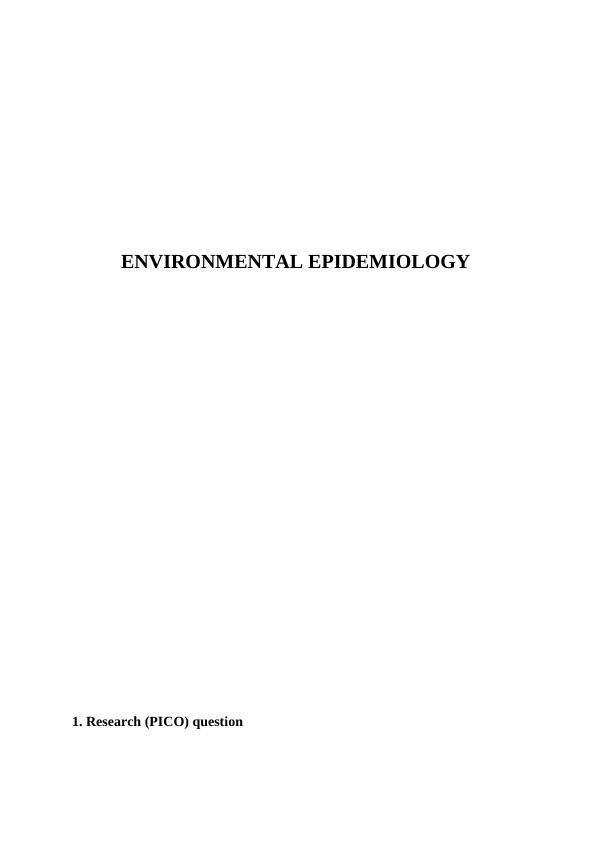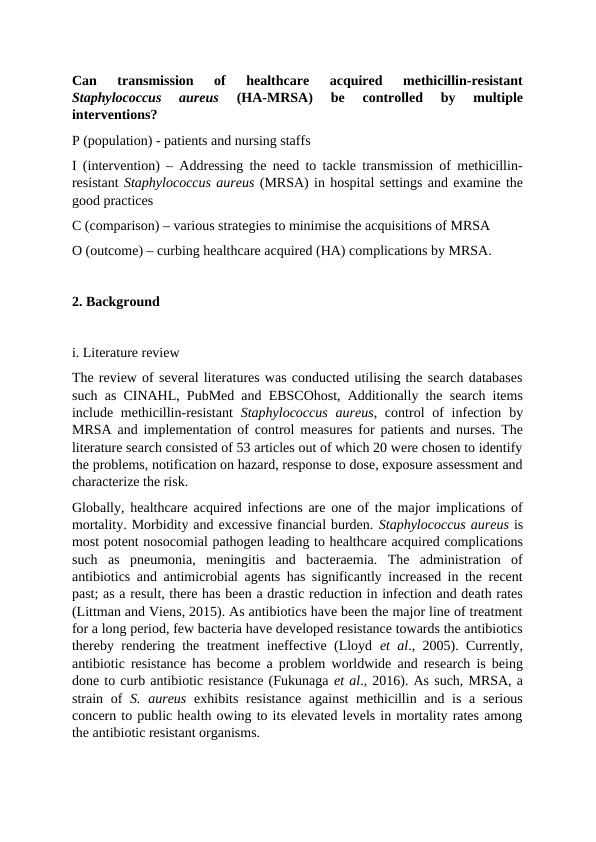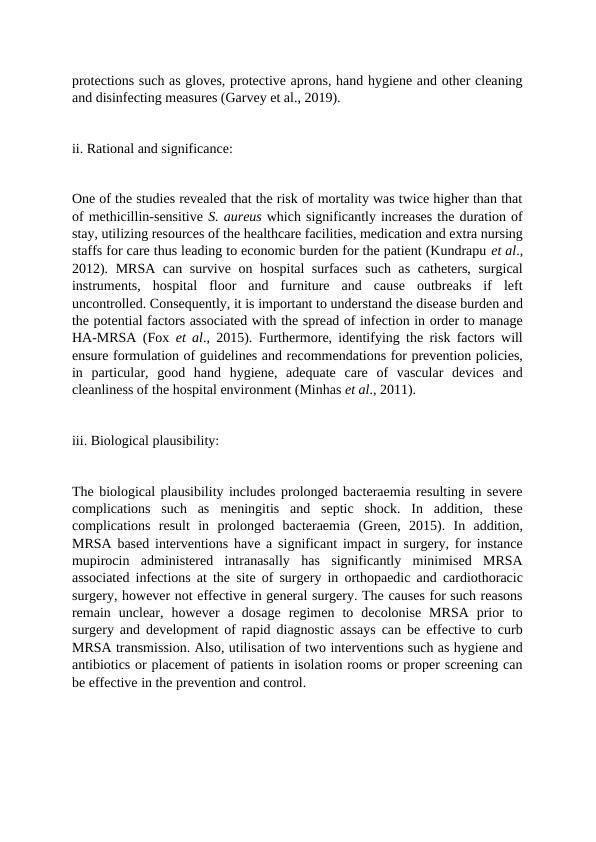Controlling Transmission of Healthcare Acquired Methicillin-Resistant Staphylococcus Aureus (HA-MRSA) Infections
Basic concepts of health risk assessment, assessing health outcomes associated with environmental exposures, types of effects, how to measure the effects, potential data sources, risk communication.
12 Pages4091 Words470 Views
Added on 2023-04-19
About This Document
This document discusses the strategies to control the transmission of healthcare acquired methicillin-resistant Staphylococcus aureus (HA-MRSA) infections in hospital settings. It includes a research question, background information, literature review, methods, and risk communication. The document emphasizes the importance of good practices, comparison of strategies, and outcomes in curbing HA complications by MRSA.
Controlling Transmission of Healthcare Acquired Methicillin-Resistant Staphylococcus Aureus (HA-MRSA) Infections
Basic concepts of health risk assessment, assessing health outcomes associated with environmental exposures, types of effects, how to measure the effects, potential data sources, risk communication.
Added on 2023-04-19
ShareRelated Documents
End of preview
Want to access all the pages? Upload your documents or become a member.
Controlling Transmission of Healthcare Acquired MRSA
|8
|3492
|100
The Royal College of Physicians Ireland Report
|17
|4455
|46
The Art and Science of Nursing
|13
|3341
|26
Communication of Healthcare Assignment 2022
|14
|1050
|22
Effectiveness of Interventions to Prevent MRSA Infection in Hospital Settings
|9
|2602
|38
Effectiveness of Interventions to Prevent MRSA Infection in Hospitals
|17
|4823
|27




